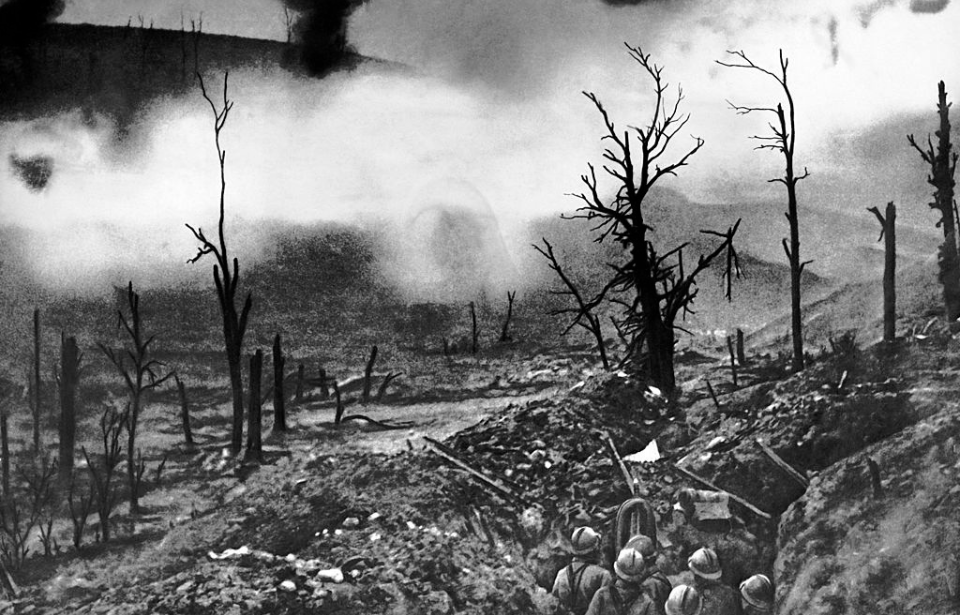Battles typically have a lasting physical impact on the places where they occur, leaving behind scars that hint at what happened. The following in a comparison of historic battlefields to their modern-day counterparts, to see how they’ve changed and healed – essentially, a then and now of the sites of some of the world’s most intense engagements.
Then and Now: Battle of Verdun
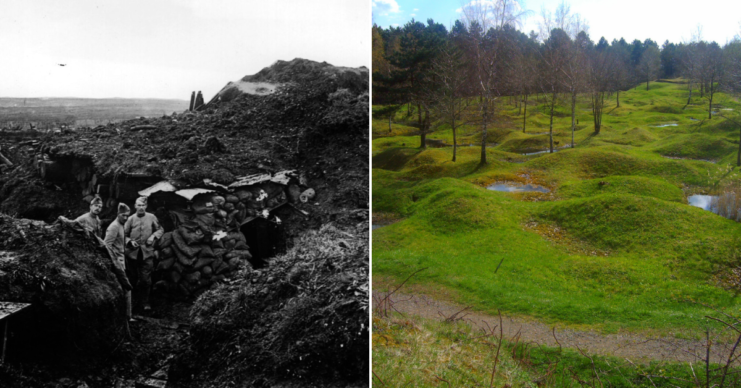
The Battle of Verdun was one of the longest and bloodiest battles of the First World War. In 1916, the Germans launched a major offensive against the French Army. Lasting from February 21-December 18, 1916, both sides suffered heavy losses. No one is sure how many perished, but it’s estimated there were around 400,000 French and 350,000 German casualties.
Of the nearly 800,000 casualties at Verdun, an estimated 70 percent were caused by artillery. The Germans launched two million shells during their opening bombardment; during the 10-month engagement, both sides fired an estimated 40-60 million shells. Their impact is still very noticeable in the battlefield terrain today, as shown during these then and now images.
Then and Now: Battle of Gettysburg
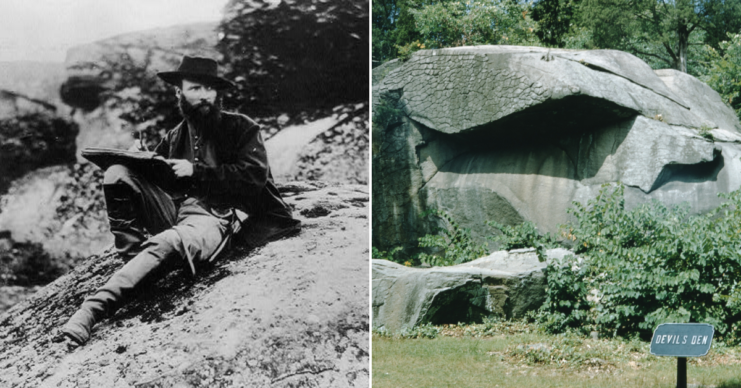
The Battle of Gettysburg was a major battle in the American Civil War, resulting in a crushing Southern defeat. Pictured above is Alfred Waud, a sketch artist for Harper’s Weekly. He’s sitting on a boulder-strewn hill on the south end of Houck’s Ridge at the Gettysburg Battlefield known as “Devil’s Den.”
On the second day of the battle, the area of the Devil’s Den saw intense fighting as part of Gen. Robert E. Lee‘s flank attacks. Ultimately, around 5,500 Confederate soldiers who were part of Maj. Gen. Bell Hood’s division captured the Devil’s Den from Maj. Gen. David Bell Birney. Total casualties amounted to 800 deaths for the Union forces and more than 1,800 for the South.
The Devil’s Den has since become a tourist attraction and among the most regularly-visited battlefields on this list. It features cannons, memorials and walkways, and several boulders have been worn down from the large amount of foot traffic over the years.
Then and Now: Omaha Beach
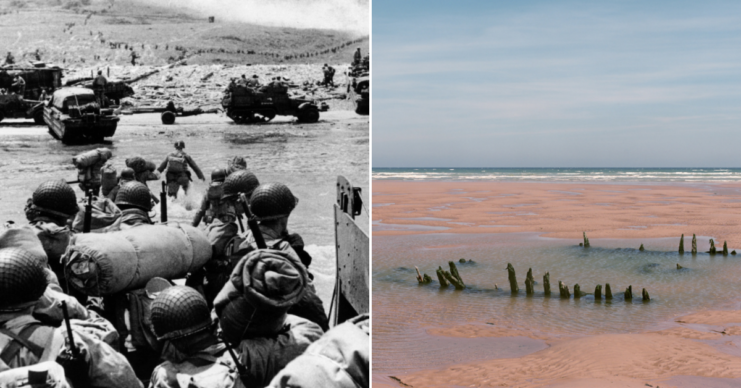
Omaha Beach linked the American and British landing sites during the D-Day landings on June 6, 1944. It’s a five-mile section of the coast of Normandy, and was the most restricted and heavily-defended beach during the Allied invasion. The waters and beach were heavily mined by the Wehrmacht, with numerous fighting positions in the area supported by an extensive trench system.
Some of these fortifications can still be seen protruding from the sand, as shown in the above battlefield then and now images.
Then and Now: Battle of Stalingrad
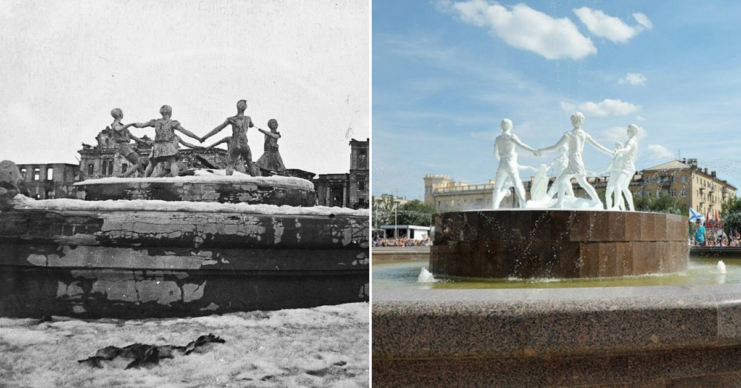
The Battle of Stalingrad stopped the German advance into the Soviet Union, and many historians consider it to be a turning point for the Allies in the Second World War.
Stalingrad – now Volgograd – was a large industrial city that produced armaments and tractors for the Red Army. The preliminary bombing campaign devastated the city. However, the rubble actually aided the Soviets, as they used it for cover and as sniper perches.
Pictured above is the city center, with a train station in the background. In the foreground is the Barmaley Fountain, which was restored after the war, but ultimately removed in the 1950s. In 2013, a replica was installed near the original railway station, creating an impressive battlefield comparison for then versus now.
Then and Now: Battle of the Somme
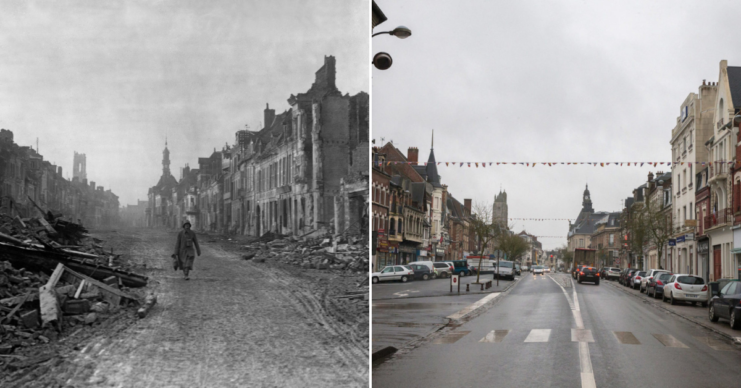
The Battle of the Somme was one of the bloodiest engagements of the First World War. It was an unsuccessful Allied offensive against German forces on the Western Front. By the end of the battle in November 1916, nearly one million Allied and German soldiers had been either killed or wounded.
The operational objective of the Anglo-French forces was to capture the cities of Pèronne and Bapaume, to root out the Germans. However, the Allies were unsuccessful in doing so, and the enemy troops maintained their positions over the winter.
Pictured above in this striking then and now composition of the battlefield is a German soldier walking through the destroyed city of Pèronne (on the left) and the rebuilt city in 2016.
Then and Now: Tet Offensive
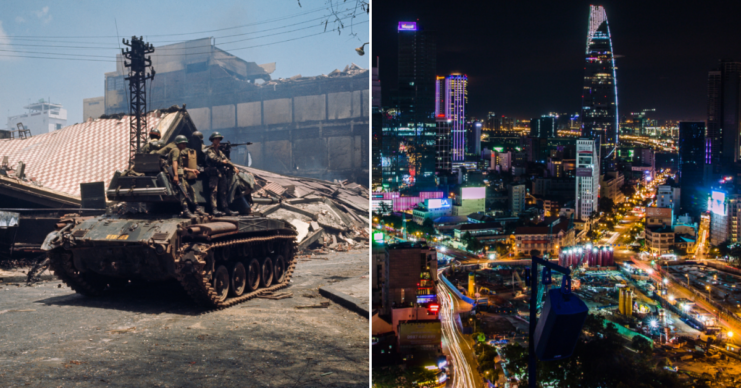
The Tet Offensive during the Vietnam War consisted of multiple attacks staged by North Vietnamese and carried out on five major South Vietnamese cities and numerous villages and towns. The Cho Lon district of Saigon (the above left photo) was a particularly bloody area of the fighting.
Then and Now: Battle of Okinawa
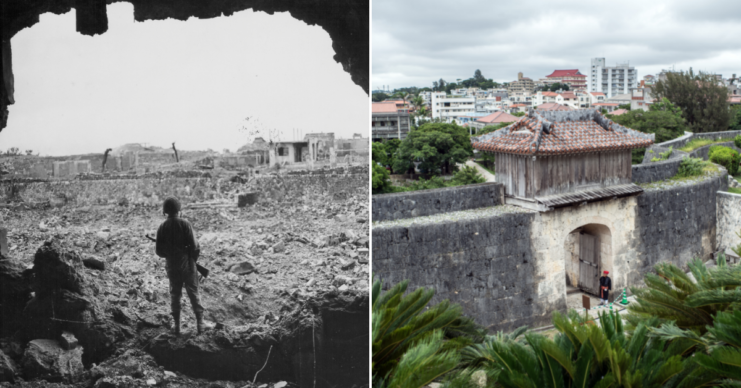
The Battle of Okinawa was one of the bloodiest battles in the Pacific Theater during the Second World War. The engagement was defined by terrible ground fighting, intense naval battles, kamikaze warfare and a high civilian death toll.
More from us: Digby Tatham-Warter: The British Major Who Disabled A German Tank With An Umbrella
There remains a massive US military presence in Okinawa today, although it’s no longer an occupying force – rather, they’re there as part of a symbiotic partnership with modern-day Japan.
